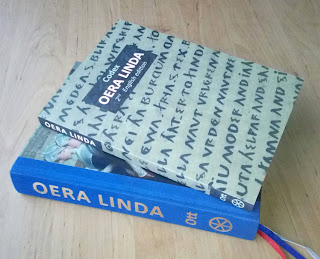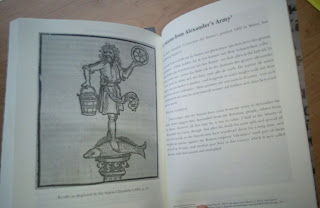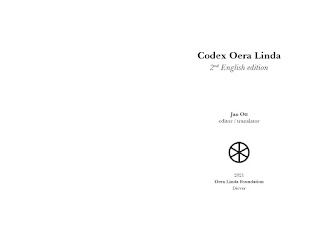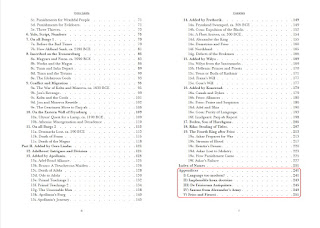 |
| Hebe with Jupiter in the shape of an eagle, by G.A. Diez (c.1820) |
DÁNTE: shape, appearance, likeness, image
gedaante - Dutch
getání - Old High German
getaene - Middle High German
dénthe - Old Frisian
Etymologists suggest this word was derived from the verb 'do'. This could be true, but in OL the present root of this verb is DVA, past DÉ-, while varieties with DÁ- do not occur.
Fragments in Oera Linda
DÁNTE (8x) - 1-7, 9
DÁNTNE (1x) - 8
13f. Primal Teachings 2
1) [102/01]
THACH HWAT AN’GA VSA DÁNTE VSA AINSKIPA VSA GÁST AND AL VSA BITHÀNKINGA. THISSA NE HÉRA NAVT TO THET WÉSA.
However, regarding our appearance, our characteristics, our mind and all our thoughts, these do not belong to the being.
2) [102/10]
THÉRVMBE FORWIXLATH ALLE ESKÉPNE THINGA FON STÉD. FON DÁNTE ÀND ÁK FON THÀNKWISA.
Therefore, all creatures change their position and their shape, as well as their minds (or mentality; lit: think-ways, ways of thinking).
13h. Apollania’s Burg
3) [106/25]
SIATH HWA FONÉRE TORE DEL SA SIATH HI THJU DANTE FON.ET JOL.
Looking down from the tower, one sees the shape of the Yule.
4) [107/25]
ANNA SUDSÍDE FON THA BUTENSTE HRING.DIK IS THJU LJUDGÁRDA. OM.TUNAD THRVCH THET GRÁTE LINDA.WALD. HJRA DÁNTE IS THRJU HERNICH.
South of the outer dyke is the Liudgarda, surrounded by the great Linda Wood. Its shape is triangular
5) [107/30]
ALSA THJU DÁNTE VSAR BURCH IS SEND ALLE ÔTHERA
All the burgs are of the same shape (lit.: as the shape of our burg is, are all others)
13i. Apollania’s Journey
6) [112/15]
DÁNA IS.T KVMEN THÀT NIMMAN NÉN SPRÉK VPPA SIN SKILD NETH. MEN BLÁT EN MIS.LIKANDE DÁNTE FON EN DIAR THÀT ER FÀLAD HETH.
Another result is that no one has a motto on his shield, but merely the distorted shape of some beast he has slain.
16a. Canals and Dykes
7) [143/30]
THRVCH SLÁTA TO DELVANE ÀND KÁDIKA TO MÁKJANE FON THA GRVND THÉR ÛT.A SLÁTA KÉM. ALSA HÀVON WI WITHER EN GODE HÉM BÛTA THA HRING.DIK. THÉR THJU DÁNTE HETH FON EN HOF
By digging canals and building dykes with the soil that came out of the canals, we have a good domain again outside the ring dyke, which is like unto a palace garden (see blog post)
18. Rika: Stealing of Titles
8) [191/5]
THÁ THA KÀNINGGAR ET ALSA WÍD BROCHT HÉDE THÀT HJA FÉDERUM THÉRA FOLKAR HÉTE THÁ GVNGON HJA TO ÀND LÉTON BYLDON ÀFTER HJARA DÁNTNE MÁKJA.
When the kings had accomplished that they were called feeders of the peoples, they proceeded by having statues made after their likeness.
19d. Askar Lost to Idolatry
9) [205/05]
EN GOLDEN SKILD HWÉRVPPA ÁSKAR HIS DÁNTE KUNSTALIK WAS UTEBYLD
a golden shield depicting an artistic image of Askar (lit. a golden shield wherup Askar his image artistically was depicted)

































